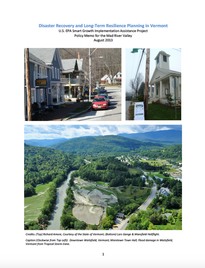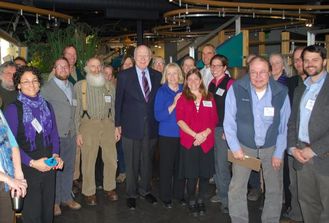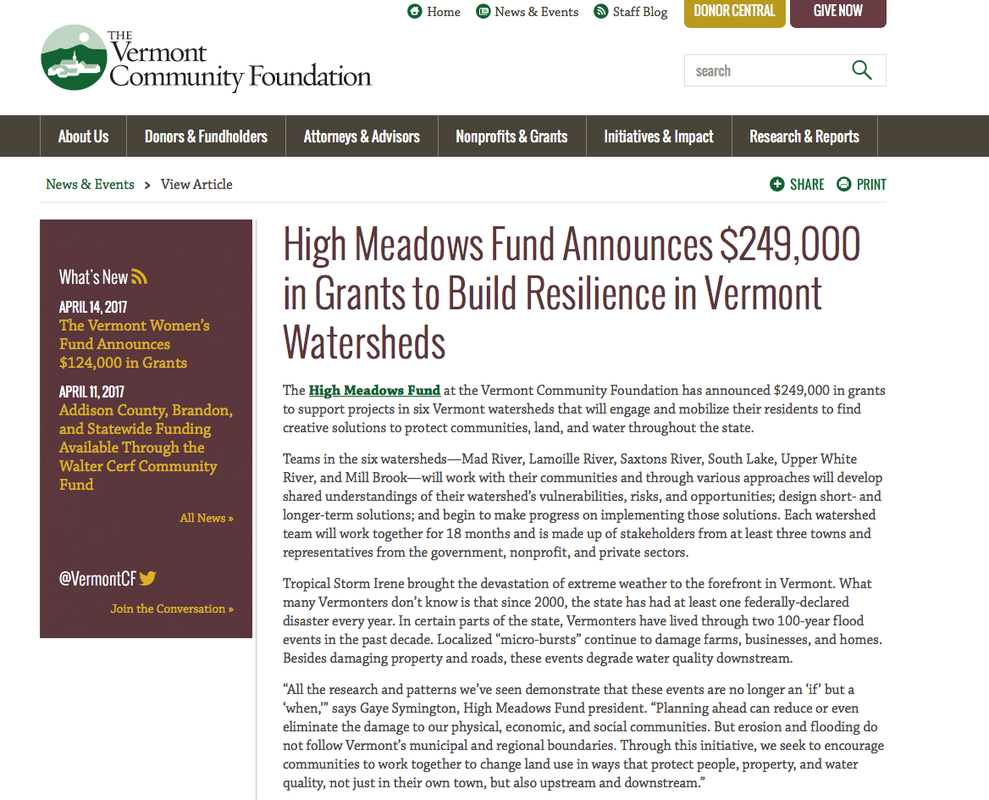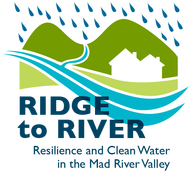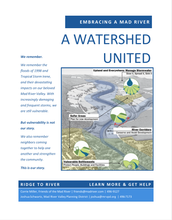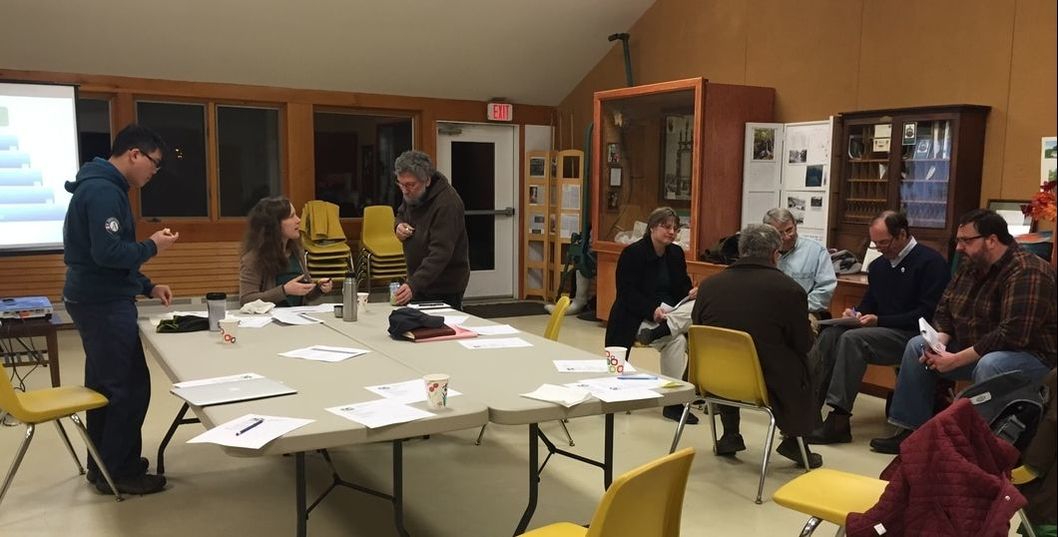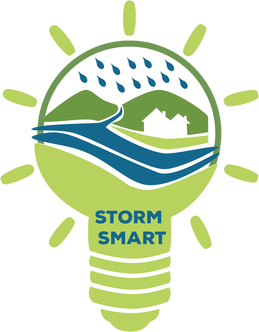Planning ProcessThe Ridge to River team has spent the last two years developing an integrated plan for action. Each step of the process led to critical new discoveries, opportunities, and strategic decisions. Learn how we moved from an idea to action.
|
THE CHALLENGE
The climate is changing, storms are becoming more frequent and damaging, and we must minimize our community's risk.
How can we build resilience and clean water in the Mad River Valley?
PHASE 1
Coming TogetherMad River Valley towns have a long history of working & talking together across town lines. Since Irene, we've known that resilience is a challenge and clean water is a priority. But three critical events helped us chart a new, strategic course to tackling these challenges together. |
2015 Leahy Center Environmental Summit
High Meadows Fund Watershed Resilience Grant
|
THE REALIZATION
The best way we can build resilience in the Mad River Valley is to manage stormwater runoff from rain and snow melt.
And because stormwater runs across municipal lines, we must work collaboratively across town, sector, and organizational boundaries.
Forming a TeamWith funding from the High Meadows Foundation, we brought together collaborators representing a range of interests and stakeholders. |
|
Launching Ridge to RiverIn our first Taskforce meetings and conversations with advisors, we spent time discussing who we are, what we wanted to accomplish, and where we want to start. |
Charting a PathIn our first meetings and strategy sessions, we realized quickly that managing stormwater in the Mad River Valley means pursuing three distinct paths. As we moved to the next phase of our work, we started taking action where opportunities were clear, while simultaneously learning, planning, and engaging with the community.
|
|
|
|
PHASE 2 - Digging In
Emerging OpportunitiesWe quickly created a process for identifying high priority sites in the Valley for stormwater work, and for ensuring that stormwater was part of the conversation as existing Valley planning and policy processes moved forward. |
|
LearningIn order to manage the stormwater at distributed sites across the Valley, we needed to learn more about three core arenas. |
|
Engagement & EducationStormwater is not a topic on the tip of everyone's tongue, so we planned events and looked for early opportunities to start engaging with the community and educating people on this critical issue. These will continue as we move toward action. |
Community Events
We prioritized going out to the community to connect with leaders and residents at a variety of events, from 5-town leadership meetings to board and commission meetings to community celebrations.
|
Education & Resources
|
PHASE 3 - Taking Action
Program DevelopmentWith data and information in hand, we started developing ideas for programs that would address our environmental challenges, fit with our planning and policy context, and serve our community. |
|
Action FrameworkOur work to date all feeds into a final strategic product: a framework of specific programs that directly address stormwater runoff across the Valley, wherever it is a problem. They are designed to appeal to our unique stakeholders, overcome barriers to action and provide incentives. Those programs are united under the banner "Storm Smart" - a comprehensive effort to help our Valley's people and places get smarter, safer and more resilient, before the next storm. In addition to individual programs, we've created integrated campaigns that package the most useful resources and programs for our priority action areas. |
|
PHASE 3 - Looking Forward
Next StepsAs we move forward with our action framework, we have additional needs in three core areas. |
|


